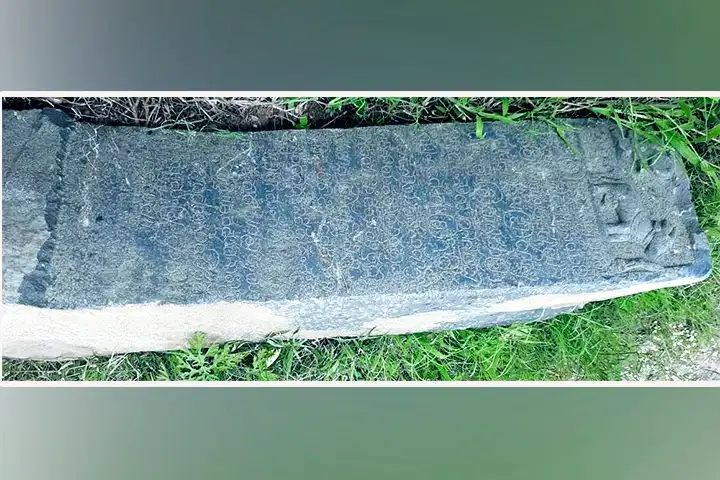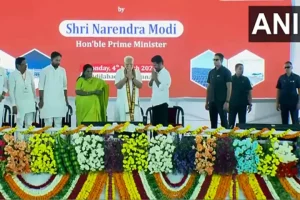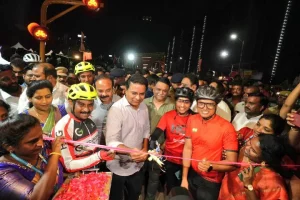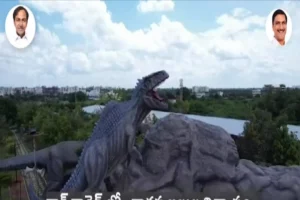Discovery of inscriptions from the past brings to light how the elite as well as the common folks live in those times. Recently, members of Kotha Telangana Chaitra Brindam, a group of amateur archaeologists and history lovers, found a 12th Century Kalyani Chalukyan inscription.
The inscription was found by Aluri Anantareddy and Prasanthreddy of KTCB at Kodiparthi village located near the famous temple town of Gangapuram in Mahaboobnagar district. Found in a field, the pillar had been exposed due to recent heavy rains in the area.
Sriramoju Haragopal the Convenor of KTCB and Dr. E. Sivanagireddy, CEO, Pleach India Foundation studied the stone inscription.
Talking to India Narrative, Haragopal said: “The inscription was issued by Mahadandanayaka Govindanayaka, who was a general in the army of Kalyani Chalukyan Emperor Bhulokamalla Someshwara-III. It is written in 12th Century Kannada language and has 19 lines.”
Sharing more details Sivanagireddy observed: “It records the gifts made for Naivedya and arrangements made for a perpetual lamp for the temple dedicated to God Mallikarjuna (Lord Shiva) on the occasion of lunar eclipse in Dundubhi cyclic year. This day as verified from Indian Ephemeris is equivalent to February 12, 1142 CE and falls on Thursday.”
Both added that the “Inscriptions of AP: Mahabubnagar District ” volumes published by the then Department of Archaeology and Museums mentions that 11 inscriptions have been found at Gangapuram which is close to Kodiparthi village. It also refers to five inscriptions that belong to Someshwara-III and one which is undated and refers to Govinda Dandanayaka. The pillar found by KTCB now adds to the existing list.
The two appealed to the Kodiparthi residents to erect a proper pedestal and a plaque with necessary historical description and details in order to preserve it for posterity.




















